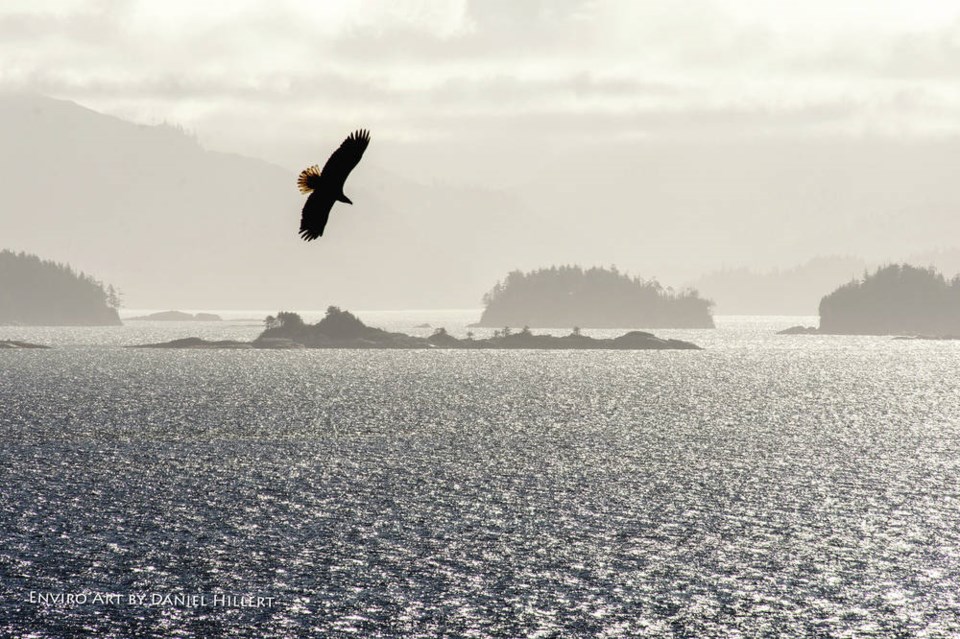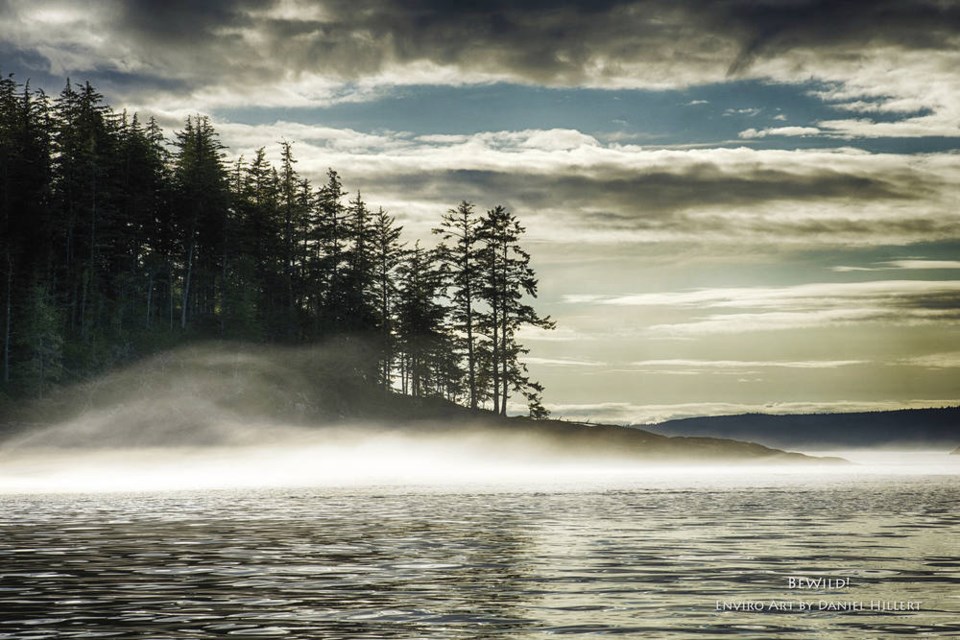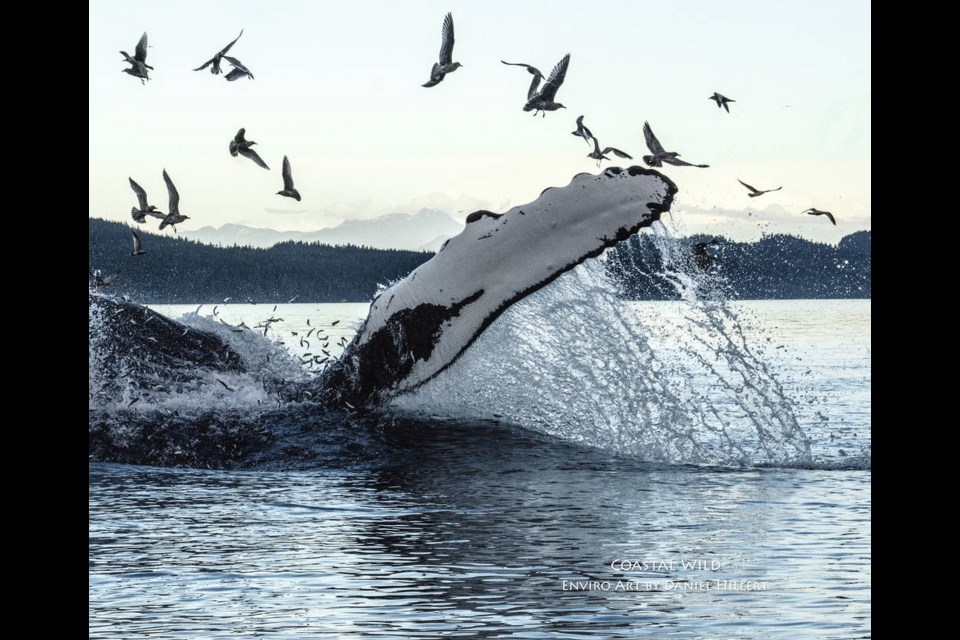An excerpt from Converging Waters: The Beauty and Challenges of the Broughton Archipelago
When fish farms first appeared on the coast in the late 1970s, they seemed like an interesting idea. They could provide food, meet consumer demand, and perhaps alleviate the stress on wild stocks. Small-scale fish farms, mainly on the Sunshine Coast of British Columbia, began raising local species such as coho, chum, chinook, and trout.
There were few industry protocols, and these “ma-and-pa” operators had to rely on their own ingenuity. Some suffered years of frustration and others managed moderate success. However, the Sunshine Coast was becoming too warm for these concentrations of biomass; extensive losses occurred from algal blooms and disease, and the public was unhappy with the pollution these farms were causing. The provincial government imposed a moratorium in the mid-1980s, but after six months it was business as usual.
Fish farms migrated to the cooler waters of the Broughton Archipelago and the Discovery Islands, and Atlantic salmon and Norwegian owners became the new face of fish farms. To illustrate the changing industry, in 1989 there were 185 small fish farms in B.C. waters, owned by 100 companies. Today there are 120 fish farms in British Columbia, twenty of them in the Broughton area, and three Norwegian companies and one Japanese company own all of them.
In the 1990s, Norwegian companies arrived with turnkey methods to set up fish farms — the same models they had used in their own country, Chile, Ireland, and Scotland. The province invited residents, fishermen, and tourism operators to advise where fish farms should not be located due to currents, weather, and, most importantly, wild fish migration routes. Colour-coded dots were used in the inlets and channels, with red signifying an inappropriate location and yellow and green marking possible locations. A few months later, there were more fish farms in the red sites than in the yellow or green.
Alexandra Morton, a fish and whale researcher, and Bill Proctor, a long-time fisherman of the area, who had both been part of the process, were shocked and angered. Over thirty years later this disregard for obvious environmental degradation still impacts their lives, the local communities, and the lives of everyone who is concerned for wild salmon and the web of life centred on them.

Atlantic salmon are conceived and raised in hatcheries and then, at the appropriate time, hosed into open-net pens in the ocean without adequate screening for viruses. Many don’t survive even this initial journey and sink to the cage floor immediately. The salmon are densely packed into the net pens, moving among their own faeces, fish pellets, and chemicals that are regularly dumped into the pens to deter the prevalent bacteria and sea lice that these conditions give rise to. The efficiency of this system might be compared to dropping a bomb on one’s front lawn in order to dig a fishpond.
“Many of the pesticides, insecticides and fungicides used by salmon farmers are derived from the Second World War’s chemical weapons programs,” writes Don Staniford in A Stain upon the Sea. These chemicals, used internationally, have poisoned the land via commercial agriculture, but were never intended to be dumped into the sea via aquaculture.
Tonnes of these deadly substances—canthaxanthin, dichlorvos, azamethiphos, cypermethrin, teflubenzuron, ivermectin, emamectin benzoate, DDT, chlordane, various PCBs, and dioxins (not to mention vaccines and antibiotics)—have been poured into the ocean every year in Scotland, Norway, Chile, and Canada since the 1980s.
One of these chemicals, canthaxanthin, a suspected carcinogen, is added to fish pellets to change farmed Atlantics’ grey flesh into the orange hue of Pacific sockeye to make them more appetizing for the marketplace. Originally, canthaxanthin was the active ingredient in tanning pills until the discovery of a death (by aplastic anemia) due to its use, and the realization that it causes retinal damage in the human eye.
Hoffmann-La Roche, the maker of canthaxanthin, was forced to withdraw its tanning pills when these discoveries were made, but saw no problem selling it to the fish-farming industry to be ingested by unsuspecting consumers.

From 1982 to 2003 the use of canthaxanthin more than trebled, while industry, governments, and even the World Health Organization classified health concerns from its use as commercially confidential. In 2002 the European Scientific Commission on Animal Nutrition published a scathing report, prompting the European Commission to order Irish and Scottish salmon farmers to reduce canthaxanthin levels by three to four times. This order has no impact on Canadian fish farm conglomerates, except that they may not market these dyed fish in Europe.
Another of the chemicals, cypermethrin, is carcinogenic, a “gender bender,” and a neurotoxin. It was brought into the industry after parasites began developing resistance to the carcinogenic organophosphates dichlorvos and azemethiphos. According to the U.K. government, cypermethrin is 100 times more toxic to some elements of the aquatic environment (read: lobsters, crabs, shrimp, oysters, etc.) than the original two chemicals.
Not only is the marine environment at peril, but so are the fish farm employees. Formerly, fish farm workers opened sacks of chemicals and walked the perimeters of the net pens to douse or “bathe” the salmon, usually without adequate protection for themselves as wind-borne chemicals would often blow back in their faces. In the case of cypermethrin, the workers would cease the application when the fish began head-wagging violently and swimming erratically.
The workers often suffered numbness in their hands and faces as an initial reaction. Years later there have been lawsuits filed against the fish farm conglomerates by employees suffering from multiple cancers, organ failures, and other mysterious ailments that have severely impacted their lives (and no doubt killed many).

Today there are chutes to deliver chemicals to the water, and other poisons are added to the fish pellets, but the toxic load to the ocean and its inhabitants remains the same. The properties of these chemical weapons of war have been known for many decades. Studies undertaken by DFO have taken twenty years to surface, and once the danger is acknowledged, dispensations have been given to fish farm companies to continue as before. It is difficult to report on current chemical use as most governments (including Canada’s) have declared environmental risk assessments “out of bounds” because the findings are “too controversial.”
These internal reports often use code names for environmentally toxic substances in case the documents are leaked.
Someone who has first-hand knowledge behind this veil of secrecy is Alexandra Morton, who has lived and worked in the Broughton Archipelago for over forty years. Morton’s whale research was interrupted one day in June 2001 when a friend and fishing lodge owner near her home made a shocking discovery.
The pink salmon smolts that were travelling to sea were infested with sea lice, twenty to forty on each of their bodies, which were not even a thumb’s length long. Such an infestation would mean a slow death for these juvenile salmon, and the fishing lodge owner knew it could also mean the death of his lodge. World-famous Irish and Scottish fishing lodges no longer exist after fish farms moved onto those coasts and spread disease to their once abundant wild salmon.




